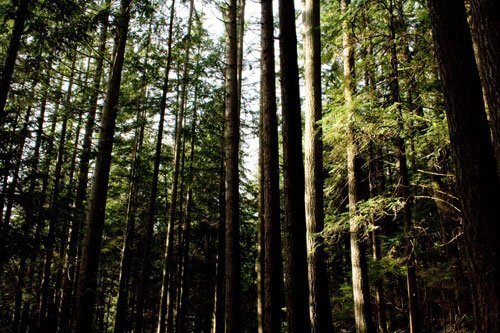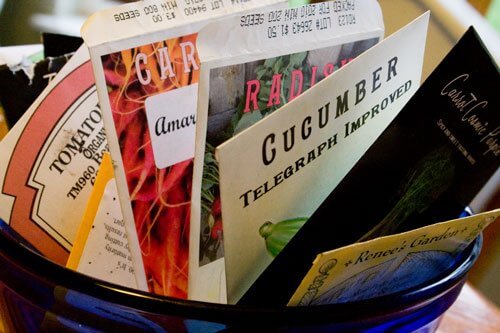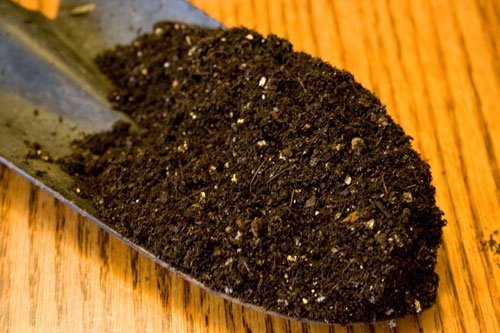How to Plant a Garden That Works for Where You Live

When I first began, I suppose I had this idea that gardening was the same everywhere… you dug up some dirt, put in seeds, fertilized and pulled some weeds, then enjoyed a harvest. A little naive (or maybe just hopeful), I now know that there is more to making a garden work in your specific neck of the woods.
This is part of our Gardening 101 series, where we’re covering a lot of basics, and I certainly don’t want to complicate things. But I do want to see you succeed in gardening (no matter what scale you do it on) and that entails a few considerations that each gardener has to make about their own little plot of earth.
For those just starting out, take only the most basic of concepts from this post and use them as a general guideline. Simple lessons like season length, frost dates and soil type will go far for you.
For those a little further down the road, you may want to dig in deeper, really taking into consideration all of the things mentioned in this post and ensure that you are maximizing your garden’s potential.
What to Consider as You Plan Your Garden
Consider your season length.
There is no magic number that you need to come up with, but rather a general idea of when you can begin to grow things and when the season really winds down. Knowing your frost dates (see below) will help to give you a good idea of this. For me, in the West Coast, my season is generally from about March to October, although obviously some crops will grow only in the warmer months, and some only in the cooler.
Consider your frost dates.
These are the average dates of the last winter frost in the springtime, and of the first frost in the fall/winter. Canadians, find your frost dates here. Americans, this is a good general frost date reference, but use this one if you don’t live in a major city or urban area.
Consider your best planting dates.
Based on the average temperatures in your local area, there are times that are more ideal than others to plant specific crops. For example, lettuce is ideally planted between April 12-May 3 where I live, although it may be planted a little earlier (with a risk of frost, low germination rates or slow growth) or a bit later (with a risk of it bolting in the late spring/early summer heat). This site will give you some general ideas of the best dates for planting where you live (just keep in mind that these are guidelines, not set-in-stone rules).

Consider your overall climate.
Is it hot and humid? You might need to focus on growing during your slightly cooler spring and fall seasons, avoiding the peak of summer. Maybe it’s more like mine and the summers are only mildly hot, with lots of sporadic rain and clouds mixed in. You may struggle with growing hot weather or long season crops, but you can likely have a fairly extended growing season overall. Perhaps you live farther north and have generally cool and damp summers. You might need to focus purely on cooler weather crops, or even think about using a greenhouse or hoop house to warm things up a bit.
Consider your gardening zone.
There are 11 garden “zones”, ranging from a 1 (arctic or extremely cold) to 11 (tropical). You can quickly find your own garden zone by locating here. Though I don’t use my zone information often, sometimes in books or articles you will find zones being referenced, in regards to particular plants that thrive in different zones, or tips for gardening in your zone. They also come in handy in gardening forums, where gardeners can compare methods and results with one another and knowing whether you are in a similar zone will help you to relate what you are learning to your own gardening experience.
Consider your particular “micro-climate”.
By this I simply mean your yard. Do you have spots that are sunnier or shadier, warmer or cooler? Sometimes there are protected areas in a yard that always stay 5 degrees warmer than other areas, or a strip along one side of the house where snow never falls, etc. This can help you plan how to use your garden space, especially when it comes to planting perennials like asparagus or rhubarb, as well as fruit trees.
Consider your soil.
There are three main types of soil: sandy, loamy, and clay. Most soils are a mixture of 2 or 3 types, and it can be helpful to know the ratios of your own soil. Try this jar test to see what kind of soil you have (it’s near the bottom of the page). It can also be helpful to know your soil’s pH, as well as it’s nutrient content. Most garden centers carry simple and inexpensive tests to help you get a better feel for what your soil is like.

Putting It All Together
If you’re new to gardening, your head may be spinning just a bit. Let me demystify all of this technical talk and give you 3 easy steps to putting this information together as you plan your garden:
1. Find your local frost dates and know your general growing season.
The basic rule is to start planting after your last spring frost (with exceptions, see #2 below) and plan for your crops to finish up before the first fall frost. Look on your garden seed packets or seedling tags to know how many days they take to grow, and count forwards or backwards from your dates to help you determine what needs to be in/out of the ground at what time. Buying seeds that suit your gardening situation will also help you to ensure success.
2. Use the general “best planting dates” as a guideline.
When you’re first starting out, these planting dates will really help you to keep on track. Make yourself a simple chart like this one so that you have a planting schedule.
3. Figure out what type of soil you have and decide on one way that you will love on your soil this season.
The jar test is quick and easy, and knowing that bit of information will help you to determine what your garden most needs to facilitate better growth. If you have clay-ish soil as I do, adding lots of composted manure or mixing in peat moss will really help to lighten it up for better root growth and easier digging and weeding. If you have a really sandy soil, adding organic matter will help it to hold moisture better, so think backyard compost.
Learn From Others
The absolute best way to grow according to where you live is to talk to those who are both local and knowledgeable.
- Compare notes with other gardening friends, especially those more experienced than yourself.
- Befriend the older generation, and learn from the gardening wisdom that they love to pass down.
- Try joining an online gardening forum, and find others who live in your garden zone or local area- swap tips, seed variety favorites, etc.
- Buy books that are suited to where you live. This year I got the book Growing Vegetables West of the Cascades (perfect for gardeners in Oregon, Washington and BC, Canada). It is so immensely helpful to learn from someone who experiences the same growing conditions and challenges that I do. Find a book written by somewhere who understands gardening where you live!
How do you garden successfully in your unique location? For those just starting out, what questions or issues do you have? Share them and perhaps I or other readers can help troubleshoot or offer suggestions!
Other Related Posts You May Enjoy
- A Tale of Two Gardens part one and part two
- How to Plan Your Garden part one and part two
- Organization in the Garden: Evaluating What You Have and What You Need
- Getting Organized in the Garden: Seed Starting and Planting Schedule
- Naturally Controlling Pests in the Organic Garden
- 5 Steps to Being a Lazy Gardener
- Gardening in Less-than-Ideal Spaces
- 7 Gardening Lessons from a Novice Gardener
- Selecting Seeds for Garden Success
- Gardening with Herbs 101: Where to Begin
- Gardening with Herbs 101: What To Grow
- 7 Reasons to Square Foot Garden
- Plan & Plant Now for Sustainability, Freedom, and a Backyard Revolution




Does anyone have any tips for growing in a shady yard? My husband just put up a beautiful privacy fence (a necessity with our neighbors!) which now shades my entire yard. I am scratching my brains to figure out how to have a decent garden this year with more than just lettuce!
@Andrea, We have a garden that’s specifically shaded in the growing season. Broccoli, lettuce, beets, carrots, cabbage, cauliflower… they all do great in the shade, especially if you live where it’s warmer. My friends who also have a shaded yard grow their tomatoes in pots on their front step – the only sunny spot. 🙂 You can also map out the path of the sun through the day and use that to place your plants who actually need it. 😉 This might mean a meandering garden through your yard, but necessity breeds ingenuity. 🙂
@Andrea, I have found that herbs grow well in our shaded yard. I purchase transplants so that they have a head start on the lack of sun, but living in central Virginia means that my herbs and lettuces don’t bolt in the summer because the shade keeps them just cool enough to produce! We’ve had great success with cat mint, lemon balm, various mints (that don’t seem to take over as terribly as they would in a sunny place!), cilantro, basil, and chives. Good luck–the worst that can happen is they don’t grow 😉
@Andrea, Do you have any places where the ground is shaded, but the sun still comes in? I had a similar situation last year, but I discovered a couple spots where the sun beat down on the back of the shed, so I planted cucumbers that ran up the side of it on a trellis. Another spot with only a bit of sun that hit the ground, but once you got a foot up, there was lots of sunshine. So I grew a pole bean teepee. They took a little longer to get going without much direct sun, but once they started climbing up the teepee and getting into the sunshine, they did well. Another option is hanging pots from a patio or shed, like those upside down tomato planters, or even just pots with herbs or I’ve seen strawberries growing high. I bet there are lots of options like that.
@Andrea,
One thing 3 friends and I did last year, which was great fun, was to have a “garden exchange”. I had a lot of sun but not a lot of space, another friend had all shade, another friend had a ton of space and too much sun, etc… We planted the specific crops that grew well in our yard, and planted 4x too much for our family, then we “swapped crops” at harvest time, and each of us got some crops from the other friends that would not have grown in our own yards! (note- this helped keep me disciplined in my own gardening b/c I often thought- I can’t let those herbs die! My friends are relying on me!) 🙂
@Jennifer, I love this idea!!!
@Andrea, a href=”#comment-56581″>@Andrea, Typically I have read, and found in my own yard, that the “fruiting” plants need more sun than the “non fruiting” ones. Fruiting are things that produce a fruit- typically the ones that need the most heat, too. So things like tomatoes, squash, pumpkins, berries, cukes, etc. will not do as well in the shade as the leafy greens and root crops. In my own yard I have limited good sun so I always plant the tomatoes and cukes in that spot and rotate the soil each year (since I can’t rotate the spot they need to grow). I make the most of my good spot by using trellises and the square foot garden method (I also use it elsewhere) to maximize the limited good space. I like the ideas I read below about hanging baskets, things like window boxes, etc. for your situation. Think outside the box…perhaps plant the leafier things and root crops in the shadier spots. Also keep in mind that other things probably won’t NOT grow, they just might not produce as much. May or may not be worth it, but perhaps experiementing a little with a few plants in the shade might help you know what does work. Then another year if it did work you could plant more there…
My gardens are in 4 different spots in my yard to make the most of the sun and also to make sure we still have enough space for my kids to play.
Also, not sure if this applies…but keep in mind that the sun in the winter and spring and fall is MUCH different patterns than the summer when its higher in the sky. Even in my yard I get the most sun in June and July and by August its more shady. If I were to map the sun based on right now I would conclude that I have 90% shade which its not that bad in the summer.
@Nola, That’s a good point about the summer sun being different. I have really noticed that, because when we moved to our new house the sun in spring was just so limited I wondered how I would ever grow anything, but by summer I had good strong sun for much longer and over more of the yard.
A great way to get started is to find a quality garden center near you (mom and pop types are my fave) and become friends with someone knowledgeable there. Buying your plants at a leisurely pace and asking them lots of questions will help immensely since they’ve probably been gardening there for some time.
I would add another very important tip: know your enemies.
Here in Southern CA, it’s gophers. Back home in SC, it was deer. Knowing your enemies helps you avoid heartbreak when you plant a glorious garden, only to find it mown down the next day.
Seriously: expect attacks and plant/defend accordingly.
@Seraphima, That’s definitely good advice about knowing your enemies! It can be disheartening to have your gardening damaged, for sure.
@Seraphima,
here in alaska- it is moose. It is seriously hard to defend from an enemy who is 9 feet high and can walk over/through almost any fence you put up!
We are contemplating a whole border of cabbages for the moose- in hopes that they will just eat around the edges and leave the middle alone:-)
I recently moved to a very different climate. This morning I met with the horticulture educator at the local cooperative extension. She was super helpful and also helped me get information about the local CSA (and yes, I said THE csa- not many choices,but it is mostly organic). I’m very excited. If you’re new to gardening (like me) or new to a climate zone (also like me) don’t be afraid to call the experts. They are eager to help!
this is my 2nd year growing a veggie garden, 4th growing herbs on my porch. i am branching out this year and adding a couple extra veggies and also adding more bee attracting flowers. i am so excited! as a newer gardener, i still have such a high learning curve, but it is fun to do! we don’t have much sun on our property because of our huge shade trees, so i have to be creative. but, i am determined to learn and have fresh produce to harvest at our house!